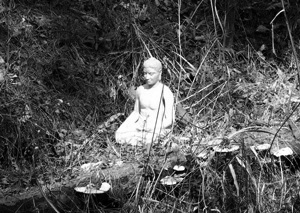Soto and Rinzai
The origin of these two traditions dates to about the 8th century in China, when many dynamic individual teachers began to put their various stamps on Zen practice. The Rinzai tradition is named for the Chinese Master of the same name in Japanese (Lin-chi, in Chinese), while Soto takes its name from the first two letters of Masters Sozan (Ts’ao-shan Pen-chi) and his teacher, Tozan (Tung-shan Liang-chieh). The Japanese Soto school was profoundly influenced by Masters Dogen, who brought the tradition from China in the 13th century and wrote about it extensively, and Keizan, who popularized it nearly 100 years later. The modern Japanese Rinzai tradition was profoundly influenced by Master Hakuin in the early 1700’s.
The primary differences between the two schools are in their approaches to realization and their practice methods. The two schools are not incompatible; their commonalities far outweigh their differences, and some Zen teachers combine both approaches, particularly those within the Harada-Yasutani lineage. The following is an oversimplification of their differences but can serve as an introduction.
The Rinzai tradition holds that the experience of realization (kensho, satori, awakening, enlightenment) is of central importance, for this experience is what ends suffering. Realization is primarily viewed as an event which one “has,” an event that represents or leads to a radical shift in one’s understanding about who they are and what reality is. It is recognized that there can be many levels of profundity of such an experience, so it is one which can be accurately evaluated and confirmed only by one who has also “had” this shift, i.e., one’s master. This experience is something that is seen, at least initially, as a goal of practice.
 In addition to zazen, attention to daily life, and intellectual study, Rinzai employs the intense examination of koans as an important, perhaps the most important aspect of practice. In the formal sense, koans are cases of life-changing encounters between Zen masters and disciples in ancient China during the “golden age” of Zen. The two most famous collections are the Pi-yen-lu, the “Blue Cliff Record” and the Mumonkan, the “Gateless Gate.” Typically, a koan is assigned by a teacher to a student who then “works” on the koan until it is “solved” to the satisfaction of the teacher. Most teachers require that their students go through a curriculum of koans as part of their training before they are qualified to receive dharma transmission. This realization (in the sense of having an experience), completing a koan curriculum, or receiving dharma transmission is not a final goal in Rinzai, for one continues to practice, to do zazen, to deepen his or her realization, and to help others.
In addition to zazen, attention to daily life, and intellectual study, Rinzai employs the intense examination of koans as an important, perhaps the most important aspect of practice. In the formal sense, koans are cases of life-changing encounters between Zen masters and disciples in ancient China during the “golden age” of Zen. The two most famous collections are the Pi-yen-lu, the “Blue Cliff Record” and the Mumonkan, the “Gateless Gate.” Typically, a koan is assigned by a teacher to a student who then “works” on the koan until it is “solved” to the satisfaction of the teacher. Most teachers require that their students go through a curriculum of koans as part of their training before they are qualified to receive dharma transmission. This realization (in the sense of having an experience), completing a koan curriculum, or receiving dharma transmission is not a final goal in Rinzai, for one continues to practice, to do zazen, to deepen his or her realization, and to help others.
The Soto tradition does not deny that many people have special experiences of realization but does see the seeking of them to be problematic. It also recognized that some shift in one’s understanding is necessary, but that shift need not be dramatic or “special.” Soto holds that what is centrally important is ongoing actualization of realization. Rather than being a special event, awakening is seen primarily as an ongoing process, always and constantly occurring here and now, always exactly at the point of the interdependent encounter between “you” and “the universe” as it is experienced in your ever-changing awareness, here and now. Awakening, at least in part, is the experiential “waking up” to that fact and to this ongoing flow of your life, which will consist of both “special” and “ordinary” moments.
The primary practice of Soto is zazen, but it is a zazen not aimed at accomplishing anything. It is zazen without a goal. Rather than being guided by trying to “get” or “attain” something, the practitioner is guided by the intention of simply being aware of what is actually occurring in the eternal “present moment.” This type of zazen is called shikantaza, which translates as “just sitting.” In addition to shikantaza zazen, Soto emphasizes what Dogen called genjokoan, the realization that everything we do is an expression of ultimate reality and an opportunity to awaken. These approaches are consistent with Dogen’s assertions of non-duality, such as “practice is realization” and “zazen itself is satori.” Tony’s teaching approach is within this shikantaza/genjokoan tradition of Soto Zen.
It may be helpful to consider that there are two basic definitions of the verb “realize.” One is “to grasp or understand clearly”; the other is “to make real.” Both are valid and each is necessary for a complete understanding of just what “realization” is. Rinzai emphasizes the first definition and Soto emphasizes the second, but each school acknowledges the validity of both.
